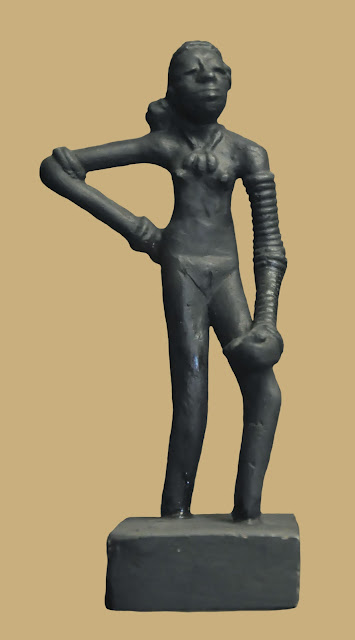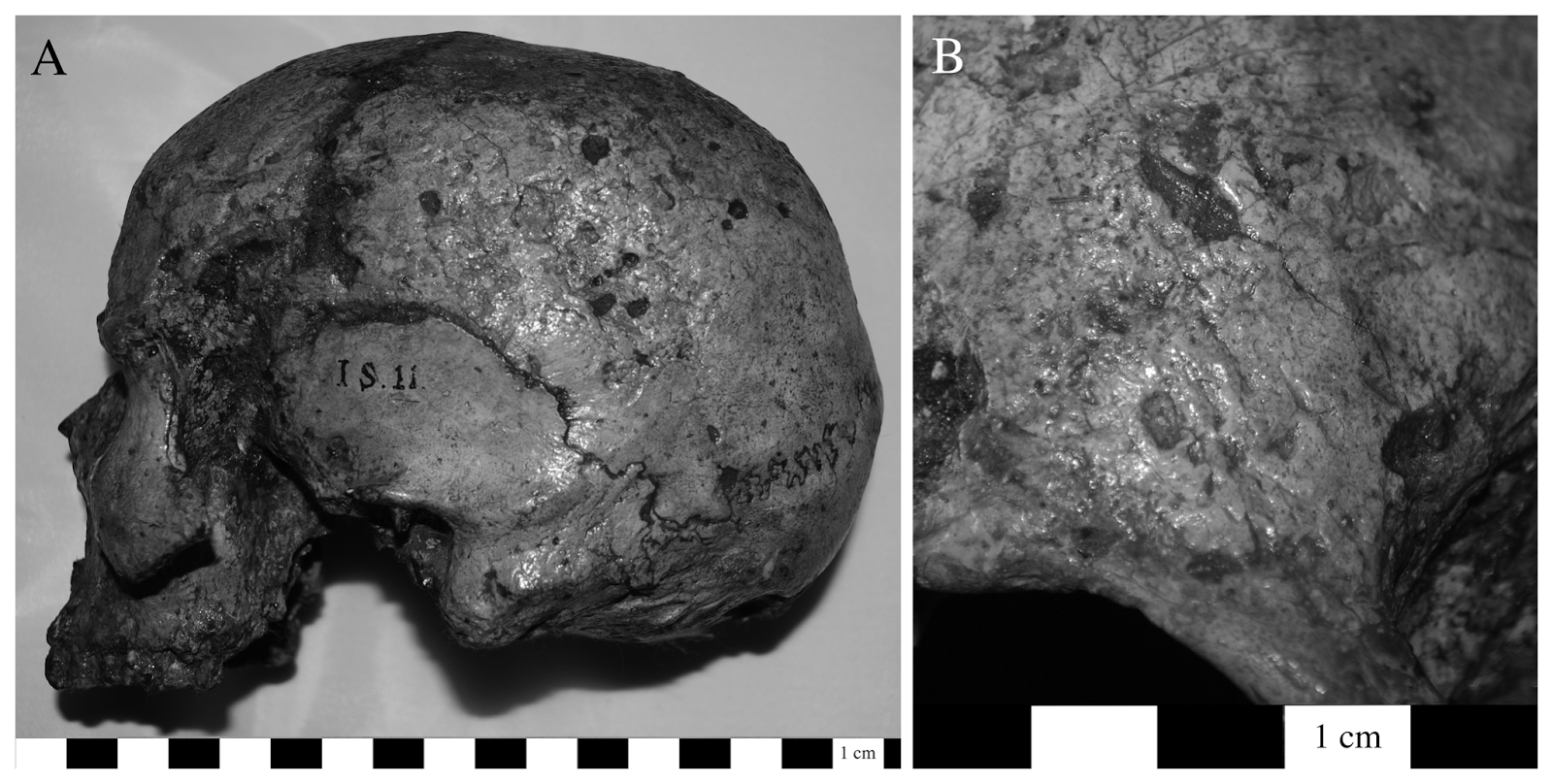Non solo in Italia accadono certe strane cose. Anche all'estero curiosi 'colpi di coda' possono fare arruffare le penne di vari studiosi... Di solito, sono piuttosto dubbioso e scettico di fronte a tutti coloro che annunciano di 'volere riscrivere la storia'.
Troppo spesso, infatti, tale affermazione è fatta da imbonitori sulla pubblica piazza, tutti intenti a vendere - per rendiconto personale - il proprio ultimo ritrovato dolce-amaro a base di zucchero ed erba fandonia...
Non escludo in assoluto che la storia, così come è stata descritta, possa essere qua e là corretta in alcuni dettagli mal compresi fino ad oggi. Ma la totale riscrittura di qualche capitolo è comunque una operazione ponderosa (difficile vi siano state sviste di quella entità) e darne l'annuncio sensazionalistico è certamente una guasconata da ciarlatano, più che il comportamento corretto e prudente dello scienziato.
Si sa - ormai è un concetto acquisito - che la storia dell'evoluzione delle specie è stata influenzata principalmente dal clima e quindi dalla geografia, dall'orografia, dalla geologia del mondo fisico circostante (anche se, certamente sì, il discorso è di quelli complessi, da non sintetizzare in una sola frase).
Non dovrebbe destare sorpresa - quindi - che si scopra un altro, ennesimo esempio di questo principio generale accettato ormai ovunque.
In questo caso, la cosa riguarda la Civiltà di Harappa, anche nota come Civiltà della Valle dell'Indo, o di Mohenjo-Daro.
La Civiltà di Harappa è poco nota e le recenti acquisizioni (di cui si dà l'annuncio sensazionale, da parte del Deccan College e della Università di stato di Seoul) ne stanno spostando indietro nel tempo le origini di circa un migliaio di anni, rispetto a quanto si pensasse prima.
Inoltre, se ne definirebbe ormai un'origine certamente più orientale (nel bacino di Gagghar-Hakra, in cui pare scorresse l'antico fiume Saraswati: una specie di 'doppione', un po' più orientale, del fiume Indo) ed un solo successivo spostamento verso occidente.
Sembrerebbe - in base ai nuovi studi - che un sito della civiltà di Harappa (Rakhighari, di cui prima si ritenevano esistenti la fase antica, l'intermedia e la tarda) sia scomparso in concomitanza con l'avvenuto prosciugamento per cause naturali di un fiume che ad esso permetteva la vita: il fiume Saraswati... Pertanto il sito sarebbe 'morto' nel 2.000 a.C. per
via della siccità e non avrebbe potuto dunque sviluppare la fase tardiva... I ritrovamenti nel sito sarebbero così numerosi da superare ormai quelli della zona di Mohenjo-Daro, tanto da richiedere implicitamente un cambiamento anche di nome della cultura dell'epoca a sfavore della provicia pachistana del Sind di Mohenjo-Daro..
----------------
Alcuni, seppure niente affatto stupiti, non sono affatto d'accordo (anonimi professori di Dehli: questo forse ricorda qualche cosa, o qualcuno in particolare?) con quanto ipotizzato, annunciato, sostenuto sopra.
Ritengono sia per lo meno sospetto il fatto che tale ipotesi 'storica' coincida con un cambio di potere ed ideologia politica in India (a cui tale teoria è gradita).
Ritengono inoltre che tale problema non debba affatto essere risolto negli ambienti accademici - cui esso non compete - bensì guardando alle cose con occhi liberi da quello che definiscono un "prisma politicoideologico" deformante (fa pensare alle definizioni sperimentate più volte anche in queste pagine, oppure no?).
Le accuse di ciarlataneria da parte accademica non sono riportate dall'articolo (ma sembrano essere chiarite dall'espressione 'prisma politico-ideologico'), mentre le accuse da parte dei nuovi ricercatori sono chiare (anche se non sembrano conoscere il vocabolo 'negazionista'): "esisteranno sempre storici accademici che negheranno sempre l'esistenza deo Saraswati, per poter meglio accreditare le proprie convenienti teorie".
Che il fatto sia di grande interesse pubblico (e politico!) è dimostrato dal numero di dichiarazioni pubbliche che vari esponenti della politica e della cultura indiani si sono sentiti in dovere di fare, nel tempo (solo brevemente riassunti nella figura, più sotto).
C'è persino almeno un libro (citato nell'articolo) in questo pasticcio. Sembrerebbe essere di una persona imparziale, che non può essere immischiato in sogni di grandeur identitaria Indiana inesistente, in quanto è francese: Michel Danino. Il libro s'intitola: "Il fiume scomparso, sulle tracce del Saraswati" e non è certamente una pubblicazione gratuita, ma certamente è appassionante lettura gratificante per moltissimi cultori locali.
I volenterosi 'riscrittori della storia' si lamentano perché gli archeologi accademici non s'affrettano ad andare a condurre scavi laddove essi chiedono a gran voce di cercare le prove delle loro teorie. Come se la questione politico identitaria avesse la priorità sulle già soverchianti e numerose priorità sociali dell'India.
Comunque si dichiarano già entusiasti fin d'ora di quello che potranno offrire gli studi sull'aDNA (sono stati - dichiarano - attentissimi a non inquinare il materiale raccolto): potranno sapere di che colore erano capelli e pelle degli antichi Ariani, quali gusti alimentari avessero, quale fosse il loro aspetto generale. E tutto sarà risolto.
Proprio come avviene anche qui da noi, nel nostro splendido SardHindustan.
Excavations show that
Harappan site died as Saraswati river dried
The Indus Valley civilisation, popularly known as Harappan civilisation, has been a puzzle for several decades now.
But with the ongoing excavation in Rakhigarhi, Haryana, jointly conducted by archaeologists of Deccan College, Pune, and Haryana Department of Archaeology, along with forensic scientists from Seoul National University, South Korea, history is on the verge of being rewritten.
Archaeological Survey of India, in collaboration with Deccan College of Pune and scientists from Korea's Seoul National University, are excavating a site in Rakhigarhi of Haryana [Credit: ASI]
"After Rakhigarhi, we can say that the Harappan civilisation was at least 1,000 years older than earlier thought.
And contrary to our longheld, conventional understanding, it first emerged in the east and then moved west, originating as it did in the heart of the Ghaggar-Hakra basin, regarded by many as the place where the Saraswati once flowed," says Vasant Shinde, vice-chancellor of Deccan College who heads the team of archeologists - the largest Harappan site overtaking Mohenjodaro in Pakistan's Sind province.
What's going to ruffle quite a few feathers, is Harappa's supposed Saraswati connection,
especially the way the drying up of one probably led to the decline of the other.
Rewriting history Shinde says that prior to his excavation it was believed that Rakhigarhi had all the three phases of the Harappan culture - 'Early', 'Mature' and 'Late'.
"Our work proves that this place doesn't have the Late Harappan phase. It collapsed around 2000 BC," says he, adding: "I believe Rakhigarhi's sudden demise can be explained with the drying up of the Saraswati in 2000 BC."
Shinde's claim is supported by Amarendra Nath, former ASI's archaeology director who had carried out excavation in Rakhigarhi between 1997 and 2000.
"The ASI has so far discovered over 2,000 Harappan sites spread over Punjab, Haryana, Uttar Pradesh, Rajasthan and Gujarat.
Of these, about 1,400 can be located in the Saraswati belt alone, while the Indus belt doesn't have more than 300-400 sites," he informs, adding: "We, in the ASI, had reached this conclusion long back. It's just that this information is coming out now."
But not everyone is impressed.
A Delhi University professor, wishing to remain anonymous, thinks this entire saga can only be analysed through the politicoideological prism, rather than the academic.
"For me, Saraswati is a mythical river and nothing more. It's not a mere coincidence that all these things are coming up soon after the BJP came to power. It's an attempt to rewrite the history, the Aryan history," says he.
Shinde seems circumspect on the Aryan migration issue.
"It's for historians to decide. But as an archeologist, I can say with confidence that for at least 7,000 years, there has been no migration into this region. You go to the village today, and you will feel you are walking through the same, old Harappan civilisation thriving 5,000 years ago. The style of pottery is similar. So are the food habits," says he.
Nath is more direct. "There will always be a set of historians who will continue to deny the existence of the Saraswati - to meet their ideological and personal requirements. They can afford to do that as history can be interpretational. (But) Not archaeology, which is based on solid evidences and facts. And evidences for long have been supporting the existence of the Saraswati in the region. Satellite imageries have proved beyond doubt the existence of a 'mighty' river drying up 4,000 years ago," Nath says.
Michel Danino, author of The Lost River: On the Trail of the Sarasvati, reminds of the dilemma . "If we accept the Vedic hymns' description of a river flowing from the mountain to the sea and located between the Yamuna and Sutlej, the Ghaggar remains the sole candidate. But as we now know, this description can only apply to the third millennium BCE or earlier, an epoch that does not fit with the conventional scenario of a second millennium Aryan migration into India," says the French author.
Nath has a solution to bridge this 'historical' divide.
"Why don't the historians objecting to our claims set up their own body of archeologists and excavate these sites? Facts don't change with the change of experts. Sadly, they won't come up with such initiatives," says he.
Neelesh Jadhao, co-director of the excavation , is excited that Korean forensic experts would conduct DNA tests on the excavated skeletons.
"This time we have ensured skeletons don't get contaminated.
We would know for the first time what the Harappans looked like, what they ate, what was the colour of their skin or hair, etc.
It will add a new perspective to the Harappan study," says he.
Source: India Today [May 22, 2015]







